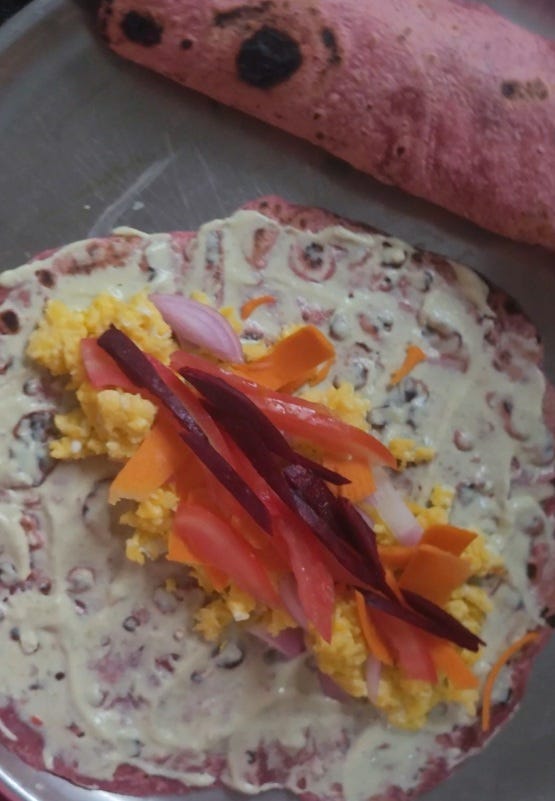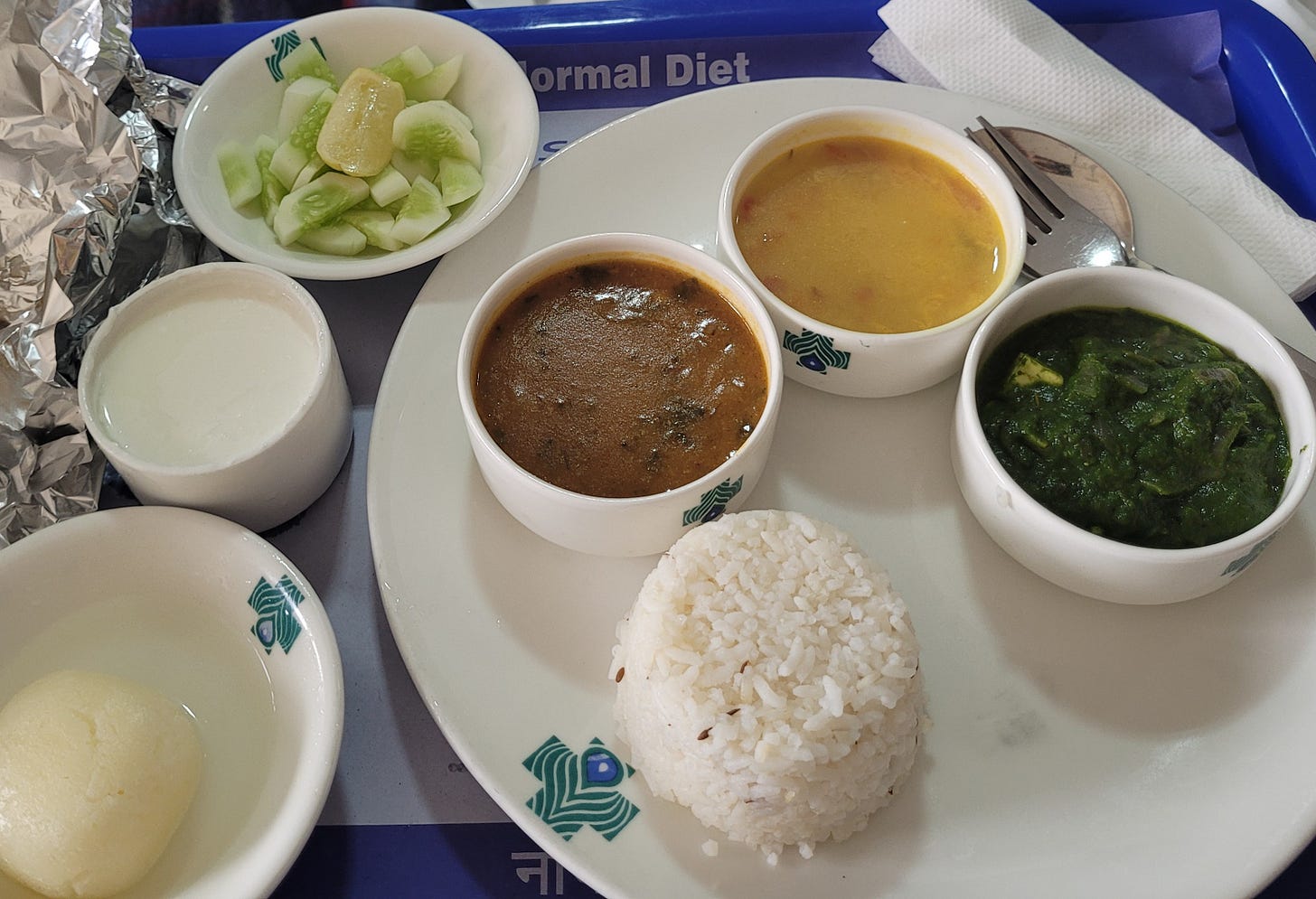No single diet is Perfect. A perfect diet varies according to the person, their appetite, their body condition, their day-to-day energy requirement, their level of activity, the season, etc. So, is the title a clickbait? Well, No. I’ll be discussing about the various different things you should include and exclude in your diet depending on your body condition, how you can modify your diet to make it the perfect diet for you!
As always, I’ve tried to keep things practical as opposed to what ideally you should consume.
(Images are just used as an asthetic representation of food and in no way is an example ideal or perfect meal)
A balanced meal needs Carbohydrates, Proteins, Fats, Vitamins, Minerals, Fibre and obviously Water. As per certain texts in Ayurveda, you’re supposed to make imaginary 4 compartments of your stomach; two of which are to be filled with food, one with water and one is kept empty. While you can’t actually measure how much your stomach is filled, what we can do is make sure you’re not completely full by the end of a meal (Completely full is what you feel after having Biryani or your favorite Pizza). This aids in digestion.
1) Carbohydrates –
Carbs can be anything of your choice. Rice, wheat, jowar, etc. ( As usual, I’m not going to bore anyone with the nutritional details or glycemic index, load, etc but if you want to know about it then you can message me personally.) The only thing to remember is that you should keep switching your carbs. Don’t have the same thing constantly. Prefer whole grain carbs and do not go for refined carbs. Like, choose whole wheat or Durum wheat pasta over the refined flour pasta. Or best, make it at home if you can. Choose, multigrain flour for your roti, chapati, bread as opposed to refined flour (commonly called Maida).
Rice is a staple in many regions and its okay to have it in moderation, but just make sure you cook it in a pot and not in pressure cooker. Also, cooled and reheated one day old rice can be consumed as it has resistant starch. Resistant starch has gut health benefits, blood sugar regulation (compared with freshly cooked rice), potential weight reduction benefits, etc. So, as long as the rice is not spoilt in any way, and refrigerated properly you can have it (if you can convince your parents!).
2) Protein –
Proteins act as a building block for tissues, organs, and muscles, and also plays a role in hormone regulation, immune system function, and energy provision. If you’re an individual with low to moderate activity levels throughout the day then you should aim to complete your protein requirements through your diet itself.
Excellent protein sources include lean meats, poultry, fish, eggs, dairy products, nuts, seeds, legumes, lentils and soy products. Try to include all these in your diet throughout the day
Some common ways you can up your protein intake
i) Up your Dal intake. Stop taking Dal over your rice and take a bowl full of thick Dal and pour some rice in it. You rice should be less enough that you need a spoon to eat it. And keep switching your Dal or use a combination of various Dals (lentils).
ii) Dal Khichdi with Dal : Rice ratio of 4: 1. (Message if you need a recipe of that)
iii) High protein Tikkis made with Chickpeas, cottage cheese, soya, etc along with High protein Dip made from Cottage cheese, yogurt or cheese (Recipe in next month, can message me personally if you can’t wait)
iv) Almonds, pine nuts, walnuts, macadamias, hazelnuts, cashews, pumpkin seeds, sesame seeds, and sunflower seeds and be used as snack options.
v) Eggs, Meat, Dairy is always a good source of protein.
(In image - Beetroot wrap with Eggs and Cottage cheese spread along with Veggies)
One major thing to remember with protein is that proteins are often hard to digest so if your digestion power is weak then better to focus on improving it before increasing protein in diet.
3) Fats
Fats have been falsely accused of being the enemy for quite a long time now. Fats are a crucial type of nutrient, vital for energy, hormone production, and various bodily functions. We all need good fats in our diet, but as always moderation is the key.
Good fats are commonly found in various plant-based sources and some fish. Omega-3 and omega-6 fatty acids are both essential polyunsaturated fatty acids (PUFAs) that the body needs but cannot produce on its own. They are important for various functions, including brain development, inflammation regulation, and overall health. They are ound in fatty fish like salmon, tuna, sardines, flaxseeds, chia seeds, and walnuts; and in plant oils (corn, soybean, sunflower) and some nuts and seeds.
Ghee i.e Clarified Butter contains good fats and cow ghee, preferably home made is an excellent thing that should be included in Diet. It helps with digestion, is appetising, reduces constipation, is strengthening, helpful to eyes, skin, etc. Ghee is rich in omega 3 fats and omega 6 but it also contains Saturated fats i.e. Bad fats and hence must be consumed in moderation. 10-15 ml throughout the day is usually a safe amount for most adults. I personally like to recommend ghee to everyone provided it is made from cow’s milk and is unadulterated.
(In image - Bottles filled with Ghee)
4) Vitamin, Minerals and Fiber
This includes a variety of plant-based foods like fruits, vegetables, legumes, nuts, seeds, and whole grains. They contain fibre which is beneficial for digestion, heart health, and weight management along with vitamins and minerals which are needed by the body in micro quantities and are essential for many body functions.
So which fruits and vegetables to eat for the ideal diet? All.
Ideally seasonal fruits and vegetables are best consumed. The key here like with carbs is to not consume one single fruit or veggie constantly but to keep rotating it. Had apples, banana and orange last week? Have a pomegranate, guava and pear this week! Have your berries as and when they are seasonal.
Salads? Sure, why not! But keep in mind that raw vegetables are kinda harder to digest than cooked ones. So you can stir fry your veggies in ghee or some olive oil and have them. That way they’ll maintain their crisp and also be slightly easier to digest.
Fruits or Fruit Juices? Always prefer whole fruits. Fruits also have fibre which is less in juices, so prefer fruits. If you’re ever having juice it should be freshly squeezed and maximum up to 50ml.
Millets are a diverse group of small-seeded cereal grains, often considered "nutritious cereals" or "superfoods," and are widely cultivated in various parts of the world. They are a good source of nutrition, particularly high in fiber and rich in vitamins, minerals, and protein.
5) Water
Have water only when you’re thirsty. You do not need 8 litres of water daily. Have enough water so that you’re hydrated. (Details in the Summer Post). Have water that is heated and then cooled to room temperature.
(Planning to make a separate post on rules of water consumption. Putting it all here will be too lengthy)
Generally, no food item is purely a carbohydrate, or a protein or a fat or a fibre. They are a combination of all but they are classified as per the maximum proportion in them. So, Dal may give you carbohydrates along with proteins, and vegetables have carbohydrates, fats and also some quantity of protein. And most foods will have some amount of Vitamin and minerals.
So, to summarise
1) Cereals like Rice, Jowar, etc should make up 12-20% of your diet. They will also have some fibre content in them.
2) Proteins will make up upto 20-40% of your diet. Remember, most proteins will also have their carbohydrate and fat content with them.
3) Fats make up about 10% of diet. This should include your ghee, you seeds and nuts, etc.
4) Various Vegetables should make up to 20-30% of your diet. They will provide the necessary fibre, vitamins, minerals, carbs as well as some protein.
5) Fruits are about 10-15% in diet.
6) Water, including in your dals, veggies, etc should be about 20-30%. It can include buttermilk which is also a source of proteins, carbohydrates, minimal lipids, vitamins and essential enzymes. (Refer my post on Buttermilk for details).
7) Okay, well….Sure! But what about dessert?? Desserts are commonly not nutrition rich but sugar rich so ideally to be avoided. But we don’t talk about ideal things here, do we? So, its okay twice a week to have a small amount of dessert along with your food, provided you’re an otherwise healthy adult.
Remember, A balanced meal is for the healthy individual with a good appetite. If you’re having any digestion issues like nausea, bloating, indigestion, acid reflux, loss of appetite, etc. then firstly you need to focus on getting your appetite back and then switch to a balanced meal. I’ll talk about that in the next post as this is getting too big now. I’ll discuss about things to have when you’ve a poor appetite in order to increase appetite and improve digestion. And also some examples of balanced meals. So, see you next Wednesday, 9 pm IST for Part II of The Practically Perfect Diet!
(Note - Images used are just for representation of food and in no way an example of an ideal or perfect meal)









